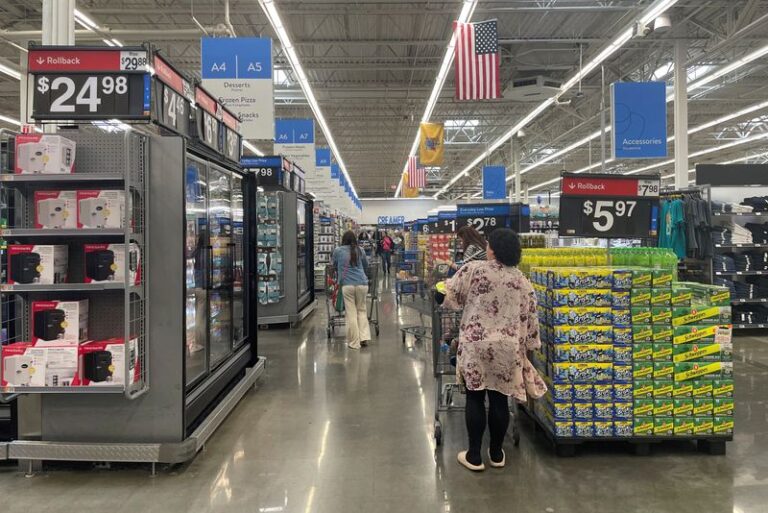By Siddharth Cavale
NEW YORK (Reuters) -Investors expect Walmart’s management to strike a cautious tone on customer demand as the U.S. labor market cools and inflation ticks up, though the company has outperformed its peers over the last year due to its reliance on grocery sales and wealthier customers shopping there more often.
Still, analysts say this environment is a sweet spot for Walmart, which reports second-quarter results on Thursday before markets open.
Its low-price model and dominance in grocery can help it weather economic storms better than others. The world’s largest retailer by sales has surpassed earnings estimates for 11 consecutive quarters, according to LSEG data, sending its valuation soaring even as other consumer staples companies have struggled this year.
The Arkansas-based chain’s stock has gained nearly 37% in the last 12 months, one of the notable non-tech companies leading a market that has largely sloughed off the effects of U.S. President Donald Trump’s ongoing trade war. The broader Consumer Staples sector is up 4.5%, trailing the broad-market S&P 500.
The company’s May-to-July results are the most closely watched event among this week’s retail earnings, following Tuesday’s results from Home Depot and Wednesday’s reports from Lowe’s and Target. Its significance goes beyond retail; as one of the largest and most recognizable companies in the U.S., Walmart is viewed as a barometer for the state of the U.S. consumer.
“Walmart essentially is middle America, so I’ll be looking for cues from Walmart as to the health of the broader economy,” said Charles Sizemore, a Walmart investor.
U.S. shoppers remain resilient despite declining sentiment, but they are being increasingly selective about purchases and have shown signs of trading down.
RBC Capital Markets analyst Steven Shemesh cautioned that Walmart may adopt a more cautious tone heading into the second half.
“The million-dollar question at this point is how customers respond to higher prices. We have seen some higher prices to date, and the consumer has managed through them OK, and we haven’t seen a material impact to volume. But I don’t think they’re very widespread price increases at this point where the consumer has really noticed,” Shemesh said.
Home Depot missed estimates for quarterly revenue and profit, but kept its annual forecasts intact on Tuesday.
Walmart’s forward price-to-earnings ratio currently stands at 35.7, compared with an average of 25.5 over the past five years, suggesting investors expect growth. Its market value has soared to about $800 billion, per LSEG Datastream.
Story Continues
